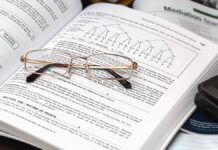A guide on how to deal with math-unfriendly passengers.
A professor was recently escorted off a USA domestic flight and questioned by security staff because, according to another passenger, he was writing terrorizing symbols. The terrifying cyphers that led to this unfortunate incident turned out to be a set of differential equations.
For a few minutes after reading the news, I seriously tried to find a rational justification for such a “misunderstanding”, but I failed. That event was just another plain instance of stupidity.
The professor was racially profiled and treated as a suspected terrorist just because another passenger did not approve of his “strangeness”. Analyzing the socio-historical roots of such contemporary fears and bigotry are beyond the scope of this article. On the other hand, we may also argue that confusing Math with frightening messages is not necessarily surprising in a country where the public understanding of science is “so-so”, at best.
Anyway, there is not much passengers and crew can do in situations like this. Or is there?
Non-sense prevention measures
If you need to solve equations on a plane, here are some practical recommendations to prevent unpleasant circumstances:
- Introduce yourself to your seating neighbors and just admit that you are a nerd (or a geek, if you feel trendier).
- If you think that the passenger seated next to you did not believe you or if you do not have “geeky looks”, then explain that you are back to school and need to do homework involving puzzles.
- Carry a soft-cover book, not too big and without gold lettering, with a cover reading: “Science stuff”.
- If you work with differential equations, try to stick to the ordinary differential variety, and please, for Newton’s sake, use passenger-friendly notation, such as prime mark notation (a.k.a. Lagrange’s notation). [expand] Joseph Lagrange, born in Italy in 1763, was mainly interest in the calculus of variations. With Euler, Lagrange developed the Euler-Lagrange equation, to solve second-order partial differential equations [/expand]
- If you must deal with partial differential equations, by all means ensure that the derivative symbols are not too curvy or exotic looking.
How to deal with math-unfriendly passengers?
If a passenger disrupts a flight simply because of an unbearable fear of math or science, then the airline and law enforcement staff could help as follows:
- Compassionately remove the disruptive passenger from the plane and rebook flights.
- While waiting, the math-unfriendly passenger should be encouraged (with a large cookie) to watch Sesame Street’s “Counting Bats with the Count”.
- Direct the passenger to a video store, but keep him/her away from sections offering “Homeland”, “American Sniper” or related classics.
- Instead, keep the passenger close to titles such as “The Big Bang Theory”, “Silicon Valley” and “Back to the Future”, to remind him/her that science people can be funny too. If the passenger looks calmer, offer a gentle high-five.
- To communicate with the passenger, never use words longer than five characters or sentences longer than three words. It may create more agitation.
The thought that people’s rights can be violated so easily, by virtue of other people’s foolishness, is scary. What is next? Reading and writing more than 140 characters will not be tolerated after boarding?
In the face of prejudice-driven insanity, it is either crying or laughing. As long as we are allowed to, let’s try to go with the latter, while expecting that human decency prevails. Let’s also laugh in the hope that, as Dostoevsky put it in The Idiot, “beauty will save the world”. Certainly, Math will continue revealing such beauty.





